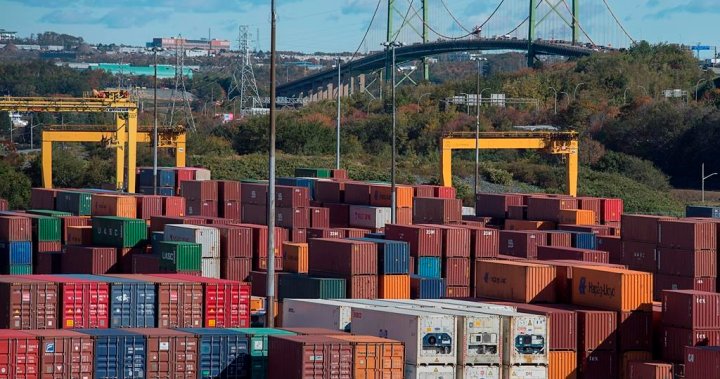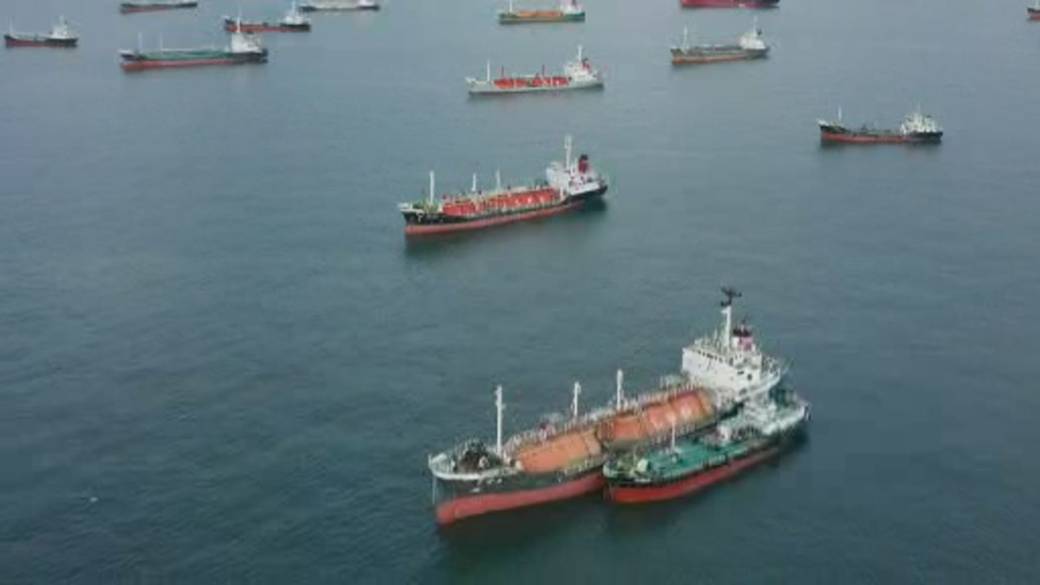A seafood importer and exporter based near Halifax knows all too well about pressure on the supply chain.

Chris and Maggie Richards own Sea Harvest Seafood, and use shipping containers to move their goods globally.
Freight rates to import from some markets have skyrocketed. While shipping containers used to cost about US$4,500, Richards says they can now cost US$24,000 or more.
“We don’t have that $20,000 in the freight rate to pass on,” Chris Richards says.
Chris Richards, owner of Sea Harvest Seafood, says some of his importing costs have skyrocketed.
Callum Smith / Global News
“There are many items that we have customers asking us for and begging us for that we would technically have every other year that we just cannot get. And it comes down to a freight rate and pricing issue.”
Read more:
Supply chain issues, earlier holiday shopping could lead to empty shelves, higher prices: economist
Rising costs can occur when demand outweighs supply, something that has become a more noticeable reality during the pandemic.
The domino effect
Unlike some other ports around North America, there’s no backlog of ships waiting in the Halifax Harbour to offload cargo.
It has “good fluidity,” according to the port’s CEO, but there are some challenges.
Some vessels will show up on short notice, while others won’t show up at all because they’re stuck at other ports where those lengthy backlogs exist.
“From a planning perspective, that makes it an interesting challenge for us, for sure,” Cpt. Allan Gray, the Port of Halifax’s president and CEO, says.
“Any failure in any part of the supply chain causes a ripple effect right through,” Gray says.
The supply chain is still feeling the surge in demand that has come during the pandemic, so when the demand drops off, the catchup can occur, he says.
“But the significant ‘if’ factor in that is, is the supply chain going to react now to get ahead of the game?” he asks.
“And that means, are we going to have labour availability 24-7? Are we going to have the truckers? Are we going to have the rail capacity to continue to clear it out? Are the distribution centres and warehouses — are they going to step up to the plate?”
“Because if the whole supply chain doesn’t, we’re going to be dealing with this backlog for a long, long, long time,” Gray says.
The business challenges
The spike in demand can mean good news for businesses, but demand outweighing readily available supply can hamper that success.
Chris Richards says the company tried to expand and export live lobster by air.
But that idea has been grounded due to an increase in connector flights.
“Customers are now coming to us because the demand is there, but we can’t get the product there,” he says. “We don’t want to ship live lobsters through an extra few airports because it’s a live item and it only has a certain shelf life.”
A truck leaving the Port of Halifax after picking up cargo.
Callum Smith / Global News
While live lobster exporting hasn’t worked out, he says he’s thankful the company deals with many different seafood species, and they’ve been able to grow those avenues.
Preventative measure moving forward
Gray says moving forward, there needs to be greater emphasis on using technology and collaboration between parties at each stage of the supply chain.
“At the moment, each of the parties in the supply chain has their own data and they hold it pretty close,” he says.
“Here at the port, we’ve often talked about digital transformation and the need for it,” Gray says. “But transparency in the supply chain, understanding where the blockages are, where the pinch points are so that you can react to them, redirect cargo, redirect resources in advance — I think that’s going to be the big push out of this.”
Simply put, Gray says digitalization means there would be a “data hub” that has shared information to help make more informed decisions and help avoid delays.
So while there’s no ship backlog waiting in the Halifax Harbour, the impacts are still far-reaching and impacting the consumer’s experience.
© 2021 Global News, a division of Corus Entertainment Inc.



